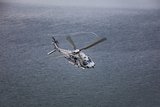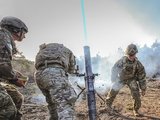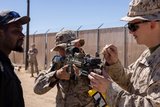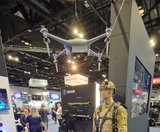Inzpire delivers second EW training course for EDA
Inzpire has delivered the second electronic warfare (EW) training course to the European Defence Agency (EDA), part of the Helicopter Exercise Programme that it offers to member states.
The two-week course was delivered at RAF Linton-on-Ouse, and resulted in 20 trainees from Austria, Belgium, the Czech Republic, Finland, Slovenia, Sweden and the UK completing the training.
The majority of students were rotary aircrew, although a number of intelligence officers and fighter aircrews also completed took part.
It provided students with an introduction to the fundamentals of EW, covering a range of topics including radar, infrared and ultra-violet.
It combined theory with practical learning, and each student had to deliver a specified threat briefing on different platforms to enable a deeper understanding of the systems.
They also undertook learning in a simulated environment, where a bespoke EW sortie was conducted to allow trainees to visualise the theory they had learnt in the classroom.
To further enhance learning, the course included a day at the UK EW range at RAF Spadeadam, where students were exposed to the use of systems including the SA-2, SA-3, SA-6 and SA-8 surface-to-air weapons.
The course was designed after research suggested personnel across Europe have a decreasing understanding of EW, partly a result of recent operation in the Middle East where threats were relatively basic in terms of the electromagnetic spectrum.
‘The delivery of the second electronic warfare course was a fantastic opportunity for Inzpire to expand on our ground-breaking electronic warfare syllabus from the debut course,’ Luke Cabot, operations and training specialist for Inzpire, said.
‘We had the unique opportunity to design a course unlike any other, and our enthusiasm, depth of knowledge and original thinking delivered an end result that was suitable for all levels of student. I was personally delighted to provide the EDA with knowledge that will enhance their operational capability.’
‘Inzpire’s unique approach to training provision involves continuous interaction with trainees to drive enthusiasm within the group, and ensure that training objectives are met and exceeded,’ Chris Raynes, head of helicopter services for Inzpire, added.
‘This was a fantastic opportunity to provide students from multiple member states with a foundation level understanding of electronic warfare principles, and we look forward to continuing to work in partnership with the European Defence Agency to deliver world-leading electronic warfare training.’
More from Training
-
![Cubic tailors mortar simulator for the US Army]()
Cubic tailors mortar simulator for the US Army
The company’s mortar trainer received improvements based on soldier’s feedback.
-
![Saab expands footprint in the US]()
Saab expands footprint in the US
The company will operate in two new locations in the coming years to better support US services.
-
![How terrain management capabilities can improve military training]()
How terrain management capabilities can improve military training
This type of tool provides more realistic training easing the incorporation of new scenarios that accurately represent the threats of the battlefield.
-
![I/ITSEC 2024: Australian Army approaches second phase of countermining training]()
I/ITSEC 2024: Australian Army approaches second phase of countermining training
The Engineering Corps has been conducting individual instruction using FLAIM Systems’ Sweeper and should start collective deployments in 2025.
-
![I/ITSEC 2024: Zeiss introduces Velvet 4K SIM projector for night flight simulation]()
I/ITSEC 2024: Zeiss introduces Velvet 4K SIM projector for night flight simulation
The next-generation platform is motion-compatible and can be used in OTW and NVG applications.
-
![I/ITSEC 2024: Saab introduces UAV live training capability]()
I/ITSEC 2024: Saab introduces UAV live training capability
The system can be used to prepare soldiers for both drone offensive operations and CUAS missions.


























